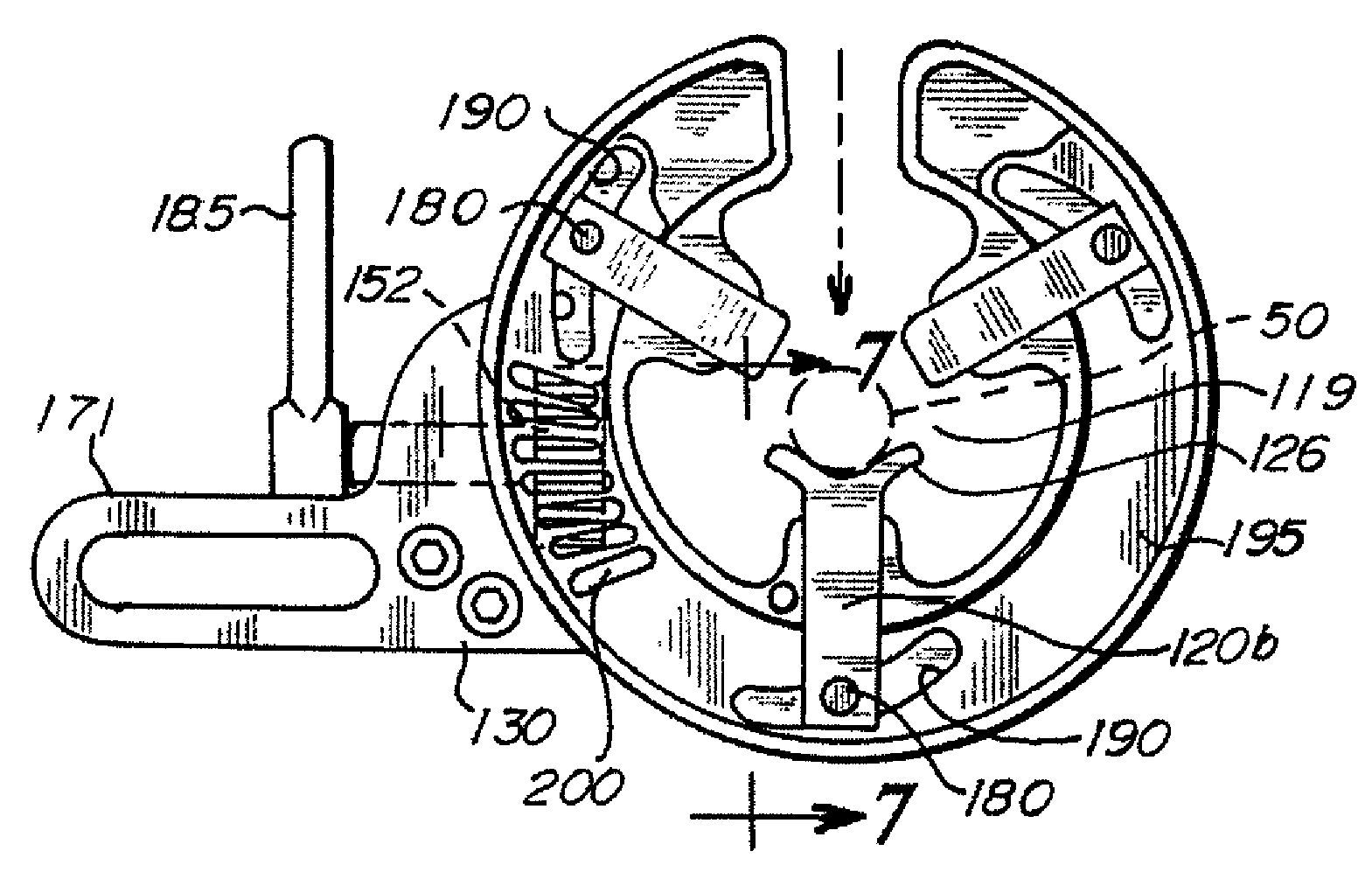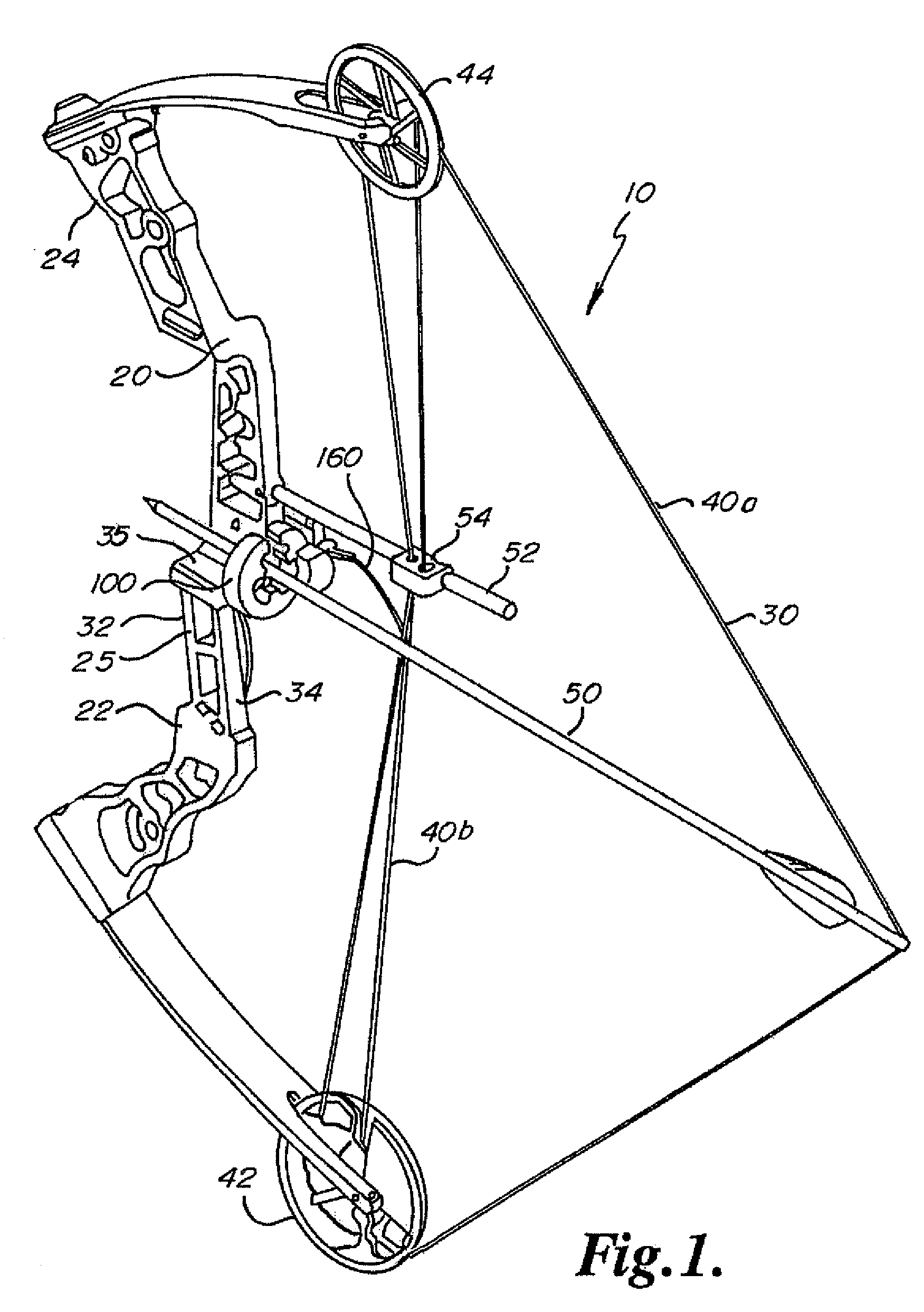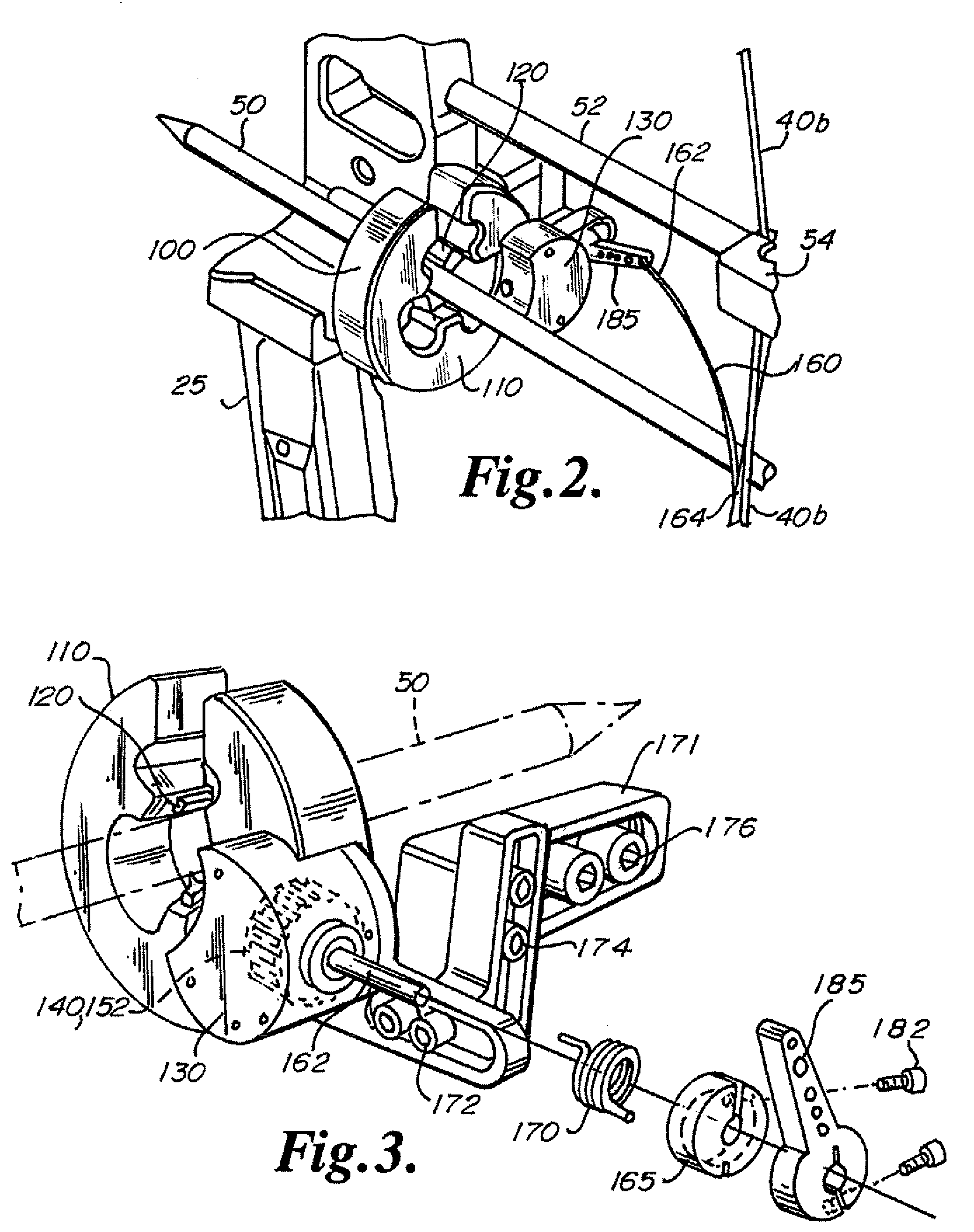Retracting containment arrow rest
a technology of containment arrows and rests, which is applied in the direction of spring guns, compressed gas guns, white arms/cold weapons, etc., can solve the problems of arrow rests not being able to move away from the arrow fast enough to allow the fletching, arrow rests may not be able to rebound into the path of the arrow, and archers may be injured
- Summary
- Abstract
- Description
- Claims
- Application Information
AI Technical Summary
Benefits of technology
Problems solved by technology
Method used
Image
Examples
Embodiment Construction
[0034]FIG. 1 illustrates an archery bow with the arrow rest 10 of the present invention attached thereto.
[0035]A compound bow 10 has a riser or frame 20 and a bow string 30. The riser 20 includes a lower portion 22 with a limb, an upper portion 24 with a limb, and a handle portion 25 with a grip (not shown) connected to and supporting the lower portion 22 and the upper portion 24. The handle portion 25 has a front surface 32 and an opposite real surface 34. During shooting with the bow, the front surface 32 is positioned facing the target and the back surface 34 is facing the archer. A ledge or shelf 35 is present above the handle portion 25.
[0036]The compound bow 10 has a pulley or cam 42 at the end of the lower portion 22 and a pulley or cam 44 at the end of the upper portion 24. The bowstring 30 extends between the cam 42 and the cam 44. The cams 42, 44 provide a mechanical advantage to the archer when drawing the bowstring 30.
[0037]The bowstring 30 includes at least two sections...
PUM
 Login to View More
Login to View More Abstract
Description
Claims
Application Information
 Login to View More
Login to View More - R&D
- Intellectual Property
- Life Sciences
- Materials
- Tech Scout
- Unparalleled Data Quality
- Higher Quality Content
- 60% Fewer Hallucinations
Browse by: Latest US Patents, China's latest patents, Technical Efficacy Thesaurus, Application Domain, Technology Topic, Popular Technical Reports.
© 2025 PatSnap. All rights reserved.Legal|Privacy policy|Modern Slavery Act Transparency Statement|Sitemap|About US| Contact US: help@patsnap.com



